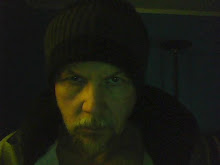X
In an afterword to Jane Kenyon’s posthumously published book of poems, Otherwise, her husband, poet Donald Hall, wrote of her poetic development:
During junior high school she began to write poems. Witter Bynner’s translations from the Chinese were an early model.
A bit further on, Hall writes:
Her poetry gathered resonance and beauty as she studied the art of the luminous particular. “The natural object”—she liked to quote Pound—“is always the adequate symbol.”
It is no coincidence that Ezra Pound, like Witter Bynner, did translations of Chinese poetry. It is the craft of the gifted, but hard-working, poet that adds to the natural object that “luminous” quality, transforming it into a universally received symbol. This is analogous to T.S. Eliot’s concept of the objective correlative. It is also that which is the Zen essence of the art of Japanese haiku, of which I have written previously. And this is precisely the quality that has inspired my new-found love of the poetry of Jane Kenyon.
In contemplating these ideas, I was reminded of Walter Pater’s ideal of the “hard, gem like flame,” which has been characterized as “his pursuit of the "highest quality" in "moments as they pass." This state of mind, born of attention, is simultaneously a mode of existence and a mode of expression. Pater, like Donald Hall, was known as an indefatiguable revisionist. The apparent stark simplicity of Jane Kenyon’s poetry is likewise the result of many drafts and revisions. While the idea may come out of nowhere—facilitated by what Kenyon favorite, John Keats, called “negative capability”—in a flash of inspiration, the poem that is finally constructed as a vehicle for that gift of the muse (or Holy Ghost) is the result of hard-earned craft.
Once the mind begins to contemplate such things as “the luminous particular” and the “objective correlative,” examples begin to pop up like mushrooms. Yesterday, for instance, I read Paul Auster’s short novel, Man In the Dark. In this novel there is a character who is (as was often the case with Jane Kenyon) trapped in deep psychological depression. As a coping mechanism she has begun watching movies for hours at a time on DVD. While it is noted by her grandfather that she is using film to self-medicate, he also realizes that she has made a valid observation concerning cinema as an art form when she says:
Inanimate objects as a means of expressing human emotions. That’s the language of film. Only good directors understand how to do it, but Renoir, De Sica, and Ray are three of the best, aren’t they?
There we have “it” as related to film.
Just this morning I drove to the public library to return a book. While there, I was able to borrow Marilynne Robinson’s novel, Home, which I had been waiting for the opportunity to read. On only the second page of the narrative [p.4], I found this excellent example of the natural object as luminous particular:
And there was an oak tree in front of the house, much older than the neighborhood or the town, which made rubble of the pavement at its foot and flung it imponderable branches out over the raod and across the yard, branches whose girths were greater than the trunk of any ordinary tree. There was a torsion in its body that made it look like a giant dervish to them. Their father said if they could see as God can, in geological time, they would see it leap out of the ground and turn in the sun and spread its arms and bask in the joys of being an oak tree in Iowa.
Beautiful. Such writing kinda puts Marilynne Robinson in the same league with Keats, Pound, Eliot, De Sica—and Jane Kenyon—doesn’t it?
_________________________
NOTE: In googling “luminous particular” among the first hits were this and this.
X
Saturday, November 29, 2008
Readings: Connecting Some Dots
Labels:
Ezra Pound,
Jane Kenyon,
Marilynne Robinson,
Paul Auster,
Poetry,
T.S. Eliot,
Witter Brynner
